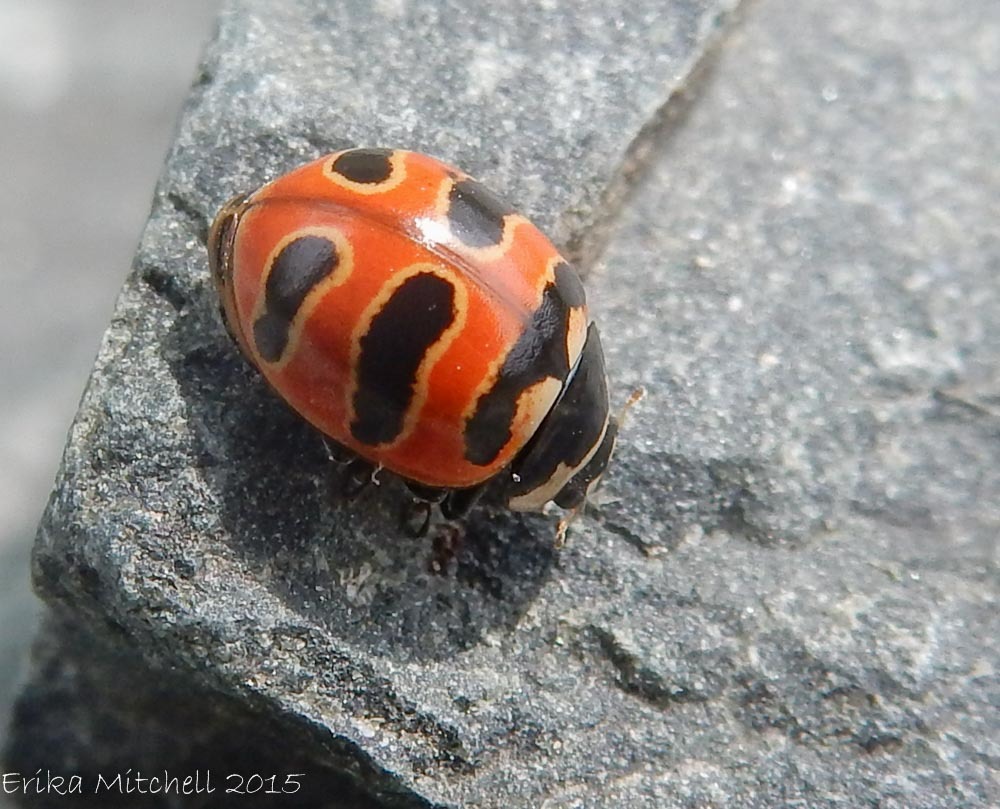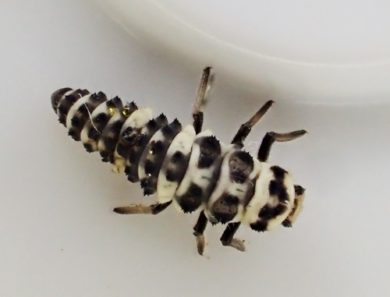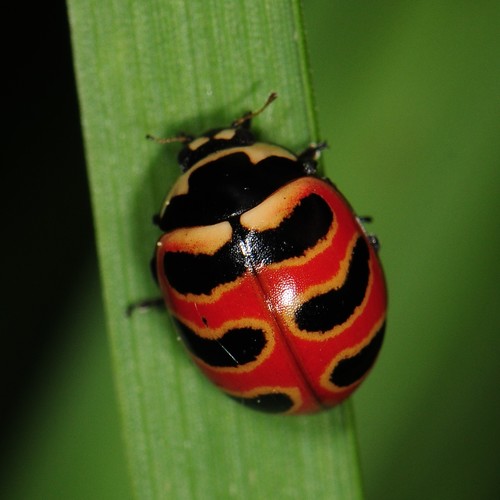
Three-banded Lady Beetle © Erika Mitchell
The Three-banded Lady Beetle is native to North America. There are three subspecies: Coccinella trifasciata perplexa, Coccinella trifasciata subversa, Coccinella trifasciata trifasciata. It’s red to reddish-brown in color with three black bands across its wing covers.
Status
Native
Globally, the status of the Three-Banded Lady Beetle is considered to be Secure (very low risk of extinction or population collapse). However, the Three-banded Lady Beetle is listed as Vulnerable (moderate risk of extinction or population collapse) in Manitoba Province and Imperiled (high risk of extinction or population collapse) in New York State.
The decline of Three-Banded Lady Beetles in parts of their range is thought to be caused by several factors. Non-native lady beetles likely are predators of the Three-banded Lady Beetle and outcompete them for food and habitat. This, coupled with habitat loss (decline in farming and open habitats associated with them) along with pesticide use are likely causes of decline.
Last Seen
2021
Fun Fact
The Three-banded Lady Beetle is considered a Species of Greatest Conservation Need in New York State.
Identification
The Three-banded Lady Beetle is a small beetle, between 4 and 5 mm in length.
- Males have a pale head with a black band across the base, while females have a black head with two pale spots.
- The pronotum has a large, black patch extending across the posterior side, close to the wing covers.
- Wing covers have two light patches at the top near the pronotum, are red to light yellow in color, and have up to three black bands, the bottom two of which are broken by the suture (where the wing covers close). The bands are often encircled by a lighter ring.
- C.t. subversa only has one band below the pronotum.
- The Three-banded Lady Beetle is often confused with the Transverse Lady Beetle.
Habitat
Often found in fields, meadows, gardens, yards, and in brambles or shrubby vegetation. Seems to have a strong preference for alfalfa.
General Range
- Coccinella trifasciata subversa: only found along the Pacific coast.
- Coccinella trifasciata trifasciata: found across New England, Northern U.S., and Southern Canada. Range extends north through Alaska.
- Coccinella trifasciata perplexa: Labrador south to New Jersey and west to California and Alaska.
Food
Mostly soft-bodied insects, such as aphids. Three-banded Lady Beetles will also eat pollen.
Life Cycle
Three-banded Lady Beetles can be found from April to October in Vermont. They seem to be easiest to find in early summer, before it gets too dry. More information is needed about the life history, but it appears they follow the usual lady beetle life history: egg, several instar phases of the larvae, pupae, and adult.
More Information
You can find more information about Three-banded Lady Beetles using the following links:
- iNaturalist Species Account
- Bug Guide Info page
- Three-banded Lady Beetle Larvae
- Living Atlas Species Profile
Vermont Distribution
Visit the iNaturalist Observation Map and Observation Records to find out where Three-banded Lady Beetles have been seen in Vermont.








